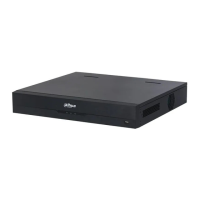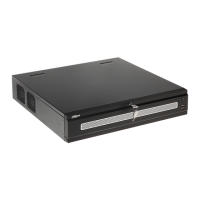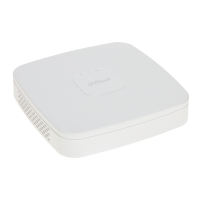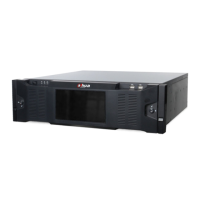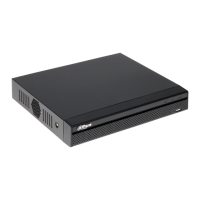Local Basic Operation 209
Click RULE to set statistics region, name, direction.
Click Setting to set alarm parameters.
OSD Overlay: Check the box here; you can view the people amount on the
surveillance video.
Entry No.: You can set people entry amount. System can generate an
alarm once the amount has exceeded the threshold.
Exit No.: You can set people exit amount. System can generate an alarm
once the amount has exceeded the threshold.
Remaining No.: You can set people staying amount in the zone. System
can generate an alarm once the amount has exceeded the threshold.
Configure the period and in the set time range, the corresponding configuration
item will be linked to start the alarm.
The alarm device (such as lights, sirens, etc.) is connected to the alarm output
port. When an alarm occurs, the NVR device transmits the alarm information to
the alarm device.
When the alarm ends, the alarm extended for a period of time. The time range is
from 0 seconds to 300 seconds.
Select the check box. When an alarm occurs, the NVR device uploads an alarm
signal to the network (including the alarm center).
This function is for some series products only.
You need to set the alarm center first. For details, see "4.12.9 Alarm
Centre."
Select the check box. When an alarm occurs, the NVR device sends an email to
the set mailbox to notify the user.
You need to set the email first. For details, see "4.12.6 Email."
Select the check box and select the needed recording channel (support multiple
choices). When an alarm occurs, the NVR device activates the channel for
recording.
You need to enable intelligent recording and auto recording first. For details, see
"4.1.4.6 Schedule."
Select the check box and click Setting to select the channel and PTZ action.
When an alarm occurs, the NVR device associates the channel to perform the
corresponding PTZ action. For example, activate the PTZ in channel one to turn
to the preset point X.
Tripwire alarm supports to activate PTZ preset point only.
You need to set the corresponding PTZ actions first, see "4.4.3 Configuring
PTZ Functions."

